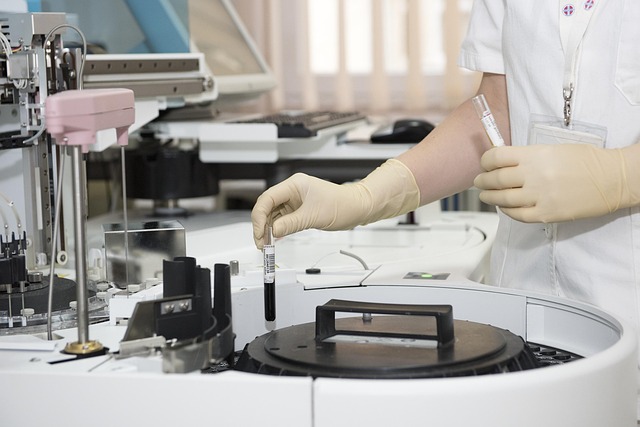The term robot operating theatre evokes images of gleaming metal arms, high‑definition displays, and surgeons operating from a console rather than a traditional OR. Yet this modern image is the culmination of more than a decade of iterative research, engineering breakthroughs, and clinical trials. The present article traces how incremental technical innovations have reshaped the way surgeons approach complex procedures, focusing on the tangible benefits that patients and healthcare systems now enjoy. From miniature robotic instruments to AI‑driven decision support, each advancement converges to deliver safer, faster, and more precise care.
The Evolution of Robotic Surgery
Robotic surgery traces its lineage to the 1980s, when the first robotic arms were engineered for industrial use and later adapted for medical tasks. The seminal Da Vinci system, released in the early 2000s, introduced a wristed robotic platform that could translate a surgeon’s hand movements into sub‑millimetric motions within the human body. Over the past twenty years, the field has evolved from single‑instrument platforms to multi‑arm suites that integrate imaging, haptics, and data analytics. Each generation of robot operating theatres has aimed to reduce invasiveness, improve visualization, and expand the range of treatable conditions.
Key Technological Innovations
The contemporary landscape of robotic surgery is defined by several breakthrough technologies. Below, we explore five that have had the most immediate impact on clinical practice.
- Miniaturized Endoscopic Instruments: Reducing shaft diameter from 5 mm to 2.5 mm allows access to previously unreachable anatomical sites.
- Enhanced 3‑D and 4‑K Imaging: Real‑time, high‑resolution visualization gives surgeons depth perception and detail comparable to direct vision.
- Haptic Feedback Systems: Tactile cues help surgeons gauge tissue resistance, mitigating inadvertent damage.
- Automated Suturing Modules: Algorithms that detect suture points and perform knot‑tying with consistent tension.
- Integration of Machine‑Learning Analytics: Predictive models that flag anomalous instrument motion or physiological changes during procedures.
Artificial Intelligence: A Decision‑Support Companion
The fusion of AI with robotic platforms has transitioned the operating theatre from a tool‑centered environment to an intelligent workspace. By ingesting intraoperative video, sensor data, and patient history, AI systems generate real‑time recommendations—such as optimal instrument trajectories or cautery settings—that surgeons can accept or override. In colorectal surgery, for instance, AI‑guided dissection has reduced anastomotic leakage rates by up to 12% in early studies. Moreover, machine‑learning models that analyze dozens of surgical metrics can predict postoperative complications before the patient leaves the OR, allowing for immediate preventive measures.
Sensor Fusion and Augmented Reality
Beyond vision, modern robot operating theatres employ a suite of sensors—force‑feedback, electromagnetic tracking, and infrared depth mapping—to create a unified representation of the surgical field. This data is projected onto a heads‑up display that overlays critical structures onto the surgeon’s view. Such augmented reality aids in avoiding vessels, nerves, or tumor margins, reducing intra‑operative error. In neurosurgery, for example, AR overlays of pre‑operative MRI onto live endoscopic footage have shortened resection times while preserving eloquent cortex.
Remote and Telesurgery Capabilities
High‑bandwidth networks and low‑latency robotic control enable surgeons to operate from distant locations. The first successful transcontinental telesurgery—performed in 2016—demonstrated that critical procedures could be executed with no perceptible delay, even across time zones. This technology democratizes access to expert care, particularly for patients in rural or underserved regions. As 5G and edge computing mature, the latency barrier will diminish further, bringing real‑time, multi‑person collaboration into routine practice.
Safety, Ethics, and Regulatory Landscape
With great power comes great responsibility. As robotic platforms become more autonomous, regulatory bodies are grappling with how to ensure patient safety without stifling innovation. The FDA’s 510(k) clearance pathway now requires rigorous clinical data on system reliability, fail‑safe mechanisms, and operator training protocols. Ethical considerations—such as data privacy, algorithmic bias, and informed consent—are also at the forefront of policy discussions. A growing consensus stresses the need for transparent audit trails, where every robotic movement is logged and can be retrospectively reviewed.
Future Directions and Emerging Trends
Looking ahead, the next wave of innovation promises to blur the line between human and machine further. Hybrid robotic platforms that combine flexible manipulators with soft‑robotic endoscopes are poised to tackle endoluminal procedures with unprecedented finesse. Meanwhile, bio‑inspired algorithms that mimic neural control of movement may enable robots to adaptively modulate force based on subtle tissue cues. In parallel, quantum‑enhanced sensors could deliver sub‑micron resolution imaging, giving surgeons an almost microscopic view of pathology. Finally, the integration of blockchain for secure data exchange could ensure that every surgical session is immutable and tamper‑proof, reinforcing trust among patients, clinicians, and payers.
Conclusion
The evolution of the robot operating theatre illustrates how relentless engineering, data science, and clinical insight can converge to transform healthcare. From miniaturized instruments that reduce surgical trauma to AI systems that anticipate complications, each innovation has added a layer of precision, safety, and accessibility. As the field advances, the focus will shift from merely adding technology to ensuring that these tools enhance the surgeon’s skill set in an ethically responsible and patient‑centric manner. The promise of robotic surgery is not just a future aspiration—it is a present reality reshaping the way we heal.


